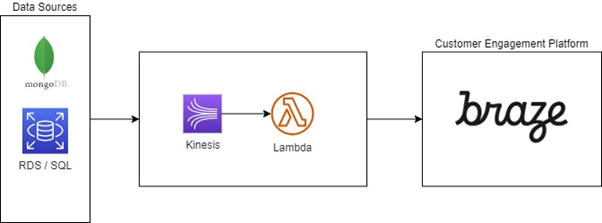Through their integrated operating model, TEG (Ticketek) bring the best live content, ticketing and technology to their partners and create memories for fans that last a lifetime.
A key differentiator in their approach is being a truly digital company first, enabling data and analytics to help shape the customer experience.
Introduction
In this part of the series, we will explore how Altis, and TEG established a near real-time data integration with the Braze customer engagement platform.
TEG uses Braze to provide meaningful, personalised campaigns to customers. The Snowflake data platform described in previous parts of this series provides a powerful source of data to customise and trigger campaigns in Braze.

Architecture
The data integration from TEG’s ticketing platform to Braze uses lambda architecture to support real-time streaming and batch processes. A combination of AWS and Snowflake services were utilised to achieve the lambda architecture.
An important architectural consideration is the use of AWS serverless features. This allows the solution to scale out during periods of high volume and scale in during quiet periods.
Snowflake tasks were used for batch orchestration and external functions for the API integration with Braze.
The batch processing component is also used for historical data migration when initially loading data into Braze as well as regular data reconciliation between Snowflake (source of truth) and Braze to ensure data synchronisation. Batch was also useful to ingest the Data Science calculations such customer segments.
Braze supports data sharing through Snowflake which provides an easy-to-setup and seamless connection between TEG’s own Snowflake data platform and their data in Braze.
Technical Highlights
Some data sources used in the integration are SQL server, MongoDB, AWS Aurora. DB events from these sources were fed into a Kinesis stream for real-time processing.
Altis utilised the Serverless framework, automated testing, and DevOps approach to expedite development of the Lambda functions to process data in Kinesis streams.
Redis cache was used to provide synchronisation when joining streams and to cache reference data lookups.
The solution design incorporated monitoring, throttling and error handling controls between TEG and Braze. This is important to ensure TEG complies with the Braze API rate limits.
Do you want to find out more about establishing an integrated data platform?
Connect with Altis today to find out how we can help maximise your business performance.
